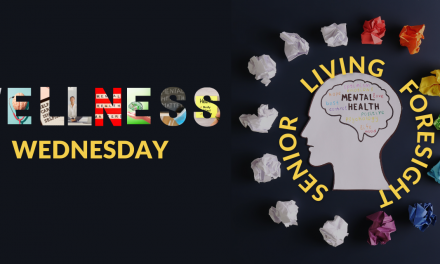By Steve Moran
We talk a lot about this in the senior living industry, kind of. The data is quite clear that aging in place is bad for the physical and mental health of older people.
The U.S. surgeon general says the health risks of prolonged isolation are as bad for you as smoking three-fourths of a pack of cigarettes a day (PDF). And that is just the physical risk. In addition, we know isolation is horrible for mental and emotional health.
Yet …
We are not as aggressive in telling this story as we could and should be. There are likely two reasons for this:
- What we want: Mostly when I talk to people in nonpublic settings who work in senior living, they don’t want to live in a senior living environment as they get older. They want to make enough money to stay at home.
It turns out they/we are no more rational than the public, or maybe the problem is that we have not yet figured out how to create senior living communities that would make living in community the first choice, followed by home, only if that is the only alternative.
- Undelivered promise. Directly related to number one is that, as we look at our senior living communities as they mostly operate, we can see that we are not really delivering what we are promising in terms of lifestyle and experience. Though even this may be a perception problem, knowing that most people who live in senior living communities and their families are really happy with the experience.
Perhaps the problem is that we are looking at senior living with younger eyes that don’t see what residents see.
Fake It Till We Make It
It occurs to me that we are ultimately buying into a societal narrative that tells us, and everyone, that living in a senior living community is bad. Maybe we need to take a “fake it till you make it” approach and every day talk about how bad aging in place really is and how great senior living really is. About how we can hardly wait to move in as part of our aging process.
We keep talking this way, it will change our thinking. When we think this way and talk this way, we will be more convincing.
What do you think?








I plan on aging in place. I live in a senior community, not a facility or care home. I just turned 75. If I went into a home, the food they serve would kill me. I eat organic, take almost no meds, prefer holistic health measures, and don’t want allopathic shoved down my throat in a care home. I have seen personal supplements thrown in the trash by the allopathic team when a client went into a hospital. I also know that most meds deplete nutrients that are not replaced so health continues to decline.
I think we also have to think about the personality types that work in care homes and which don’t. I am borderline introvert. I prefer being alone and doing my projects. I have two dogs to walk me several times a day. I meet other dog owners and my very social female Yorkie insists on visiting friends. I am also still working some and get my socialization there, too.
I want control over my life and health. That isn’t the case in care homes so much.
Hi Linda
We all get to make choices about how we age. There are for sure communities where you would have a hard time eating healthy, but there are others that focus on helping residents live healthy lifestyles including the food they eat.
1. The data is clear, people who live in community live longer than those isolation. I am not saying senior living is the only place to get community, but it is a good place to do so.
2. We also know the majority of people who live in senior living communities say making that move has made their lives better and they
Senior living isn’t the right choice for everyone, just as aging in place isn’t right for everyone either. Neither is inherently bad or good. But suggesting that we try to gaslight older adults into believing something is right for them (when it might not be) is not appropriate.
In addition, there are areas where senior living communities aren’t even an option, and in other areas the available communities are simply unaffordable for the majority of older adults.
The growth of the senior living industry suggests that the societal narrative is not the problem. If the narrative was negative, the industry would stagnate or decline.
Please provide your sources of the data that is “quite clear that aging in place is bad” as well as sources for your claim that “most people who living in senior living communities….are really happy with the experience.”
Hi Patricia
I appreciate your taking the time to reply though I think the charge of “gaslighting” is both inaccurate and harsh. A couple of things:
1. With respect to sources: A. See the pdf linkedin the article. B. This is a link to an article that talks about research done on resident happiness: https://www.mcknightsseniorliving.com/home/news/study-retirement-community-residents-are-happier-than-other-older-adults/
2. Here is why the gaslighting charge is unfair. A. If you look up the definition of gaslighting, the article simply doesn’t fit. B. My audience is primarily made up of people who work in the industry, rather than consumers. This was a suggestion about how they could tell their story more effectively.
3. There is no question that affordability is a real issue and with a shrinking labor force it will become increasingly difficult. There are people and organizations working on the problem and ultimately I do believe we will see the Federal government allow more flexibliity in paying for assisted living.